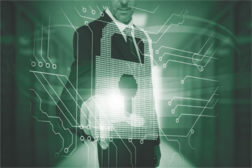Cybersecurity News
4 Challenges to Address in Corporate Cyber War
We are fighting a cyber war and need to take proactive steps to protect ourselves and our companies as the virtual bullets fly.
September 1, 2014
3 in 10 Consumers Losing Trust in Retail Data Security
Only 55 percent of global consumers feel stores use security systems that adequately protect financial data against hackers and data breaches
September 1, 2014
Sign-up to receive top management & result-driven techniques in the industry.
Join over 20,000+ industry leaders who receive our premium content.
SIGN UP TODAY!Copyright ©2024. All Rights Reserved BNP Media.
Design, CMS, Hosting & Web Development :: ePublishing








